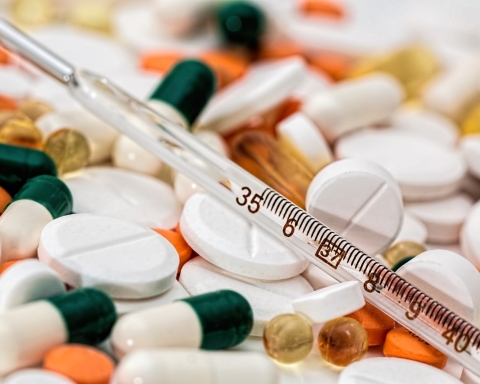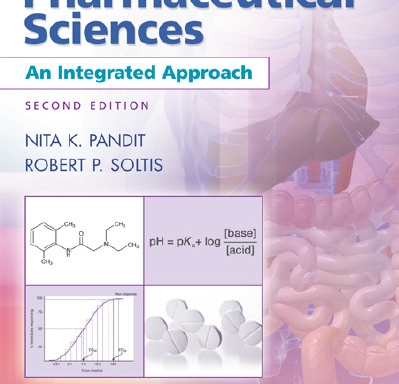Floating systems or hydrodynamically controlled systems are low-density systems that have sufficient buoyancy to float over the gastric contents and remain buoyant in the stomach without affecting the gastric emptying rate for a prolonged period of time. While the system is floating on the gastric contents, the drug is released slowly at the desired rate from the system. After release of drug, the residual system is emptied from the stomach. This result seen an increased GRT and a better control of the fluctuations in plasma drug concentration. However, besides a minimal gastric content needed to allow the proper achievement of the buoyancy retention principle, a minimal level of floating force (F) is also required to keep the dosage form reliably buoyant on the surface of the meal. Many buoyant systems have been developed based on granules, powders, capsules, tablets, laminated films and hollow microspheres.
Approaches to design floating drug delivery system
Approaches to Design Single and Multiple Unit Dosage Form
The following approaches have been used for the design of floating dosage forms of single and multiple unit systems.
For Single Unit Dosage Forms (Ex: tablets)
(i) Floating lag time: It is the time taken by the tablet to emerge onto the surface of dissolution medium and is expressed in seconds or minutes.
(ii) In vitro drug release and duration of floating: This is determined by using USP II apparatus (paddle) stirring at a speed of 50 or 100 rpm at 37 ± 0.2 °c in simulated gastric fluid (pH 1.2 without pepsin). Aliquots of the samples are collected and analysed for the drug content. The time (hrs) for which the tablets remain buoyant on the surface of the dissolution medium is the duration of floating and is visually observed.
(iii) In vivo evaluation for gastro-retention: This is carried out by means of X-ray or Gamma scintigraphic monitoring of the dosage form transition in the GIT. The tablets are also evaluated for hardness, weight variation, etc.
For Multiple Unit Dosage Forms (Ex: microspheres)
i) Morphological and dimensional analysis with the aid of scanning electron microscopy (SEM). The size can also be measured using an optical microscope.
(ii) In vitro floating ability (Buoyancy %): A known quantity of microspheres are spread over the surface of a USP (Type II) dissolution apparatus filled with 900 ml of 0.1 N HCl containing 0.002% v/v Tween 80 and agitated at 100 rpm for 12 hours. After 12 hours, the floating and settled layers are seperated, dried in a dessicator and weighed. The buoyancy is calculated from the following formula.
Buoyancy (%) = Wf / ( Wf + Ws) x 100
Where Wf and Ws are the weights of floating and settled microspheres, respectively.
[wp_ad_camp_4](iii) Drug-excipient (DE) interactions: This is done using FTIR. Appearance of a new peak, and/or disappearance of original drug or excipient peak indicate the DE interaction.
Types of floating drug delivery systems
A. Floating systems
B. Bioadhesive systems
C. Swelling and expanding systems
D. High density systems
E. Modified systems.
A. Floating drug delivery systems
Floating drug delivery system is also called the hydrodynamically balanced system (HBS). Floating drug delivery systems (FDDS) have a bulk density less than gastric fluids and so remain buoyant in the stomach without affecting gastric emptying rate for a prolonged period of time. While the system is floating on the gastric contents, the drug is released slowly at the desired rate from the system. After release of drug,the residual system is emptied from the stomach. This results in an increased GRT and a better control of the fluctuations in plasma drug concentration.
This delivery system is further divided into in to
- Non-effervescent
- Effervescent (Gas-generating system)
Non-effervescent systems
The Non-effervescent FDDS is based on mechanism of swelling of polymer or bioadhesion to mucosal layer in GI tract. The most commonly used excipients in non- effervescent FDDS are
- gel forming or highly swellable cellulose type hydrocolloids,
- hydrophilic gums,
- polysaccharides and matrix forming materials such as polycarbonate, polyacrylate, polymethacrylate, polystyrene as well as bioadhesive polymers such as Chitosan and carbopol.
The various types of this system are as:
i) Colloidal gel barrier systems / Single Layer Floating Tablets:
Hydrodynamically balanced system (HBS), which contains drugs with gel forming hydrocolloids, was first designed by Sheth and Tossounian in 1975. These systems incorporate a high level (20-75%w/w) of one or more gel forming, highly swellable, cellulose type hydrocolloids, polysaccharides and matrix forming polymers. On coming in contact with gastric fluid, the hydrocolloids in the system hydrate and form a colloidal gel barrier around its surface. This gel barrier controls the rate of fluid penetration into the device and consequent release of the drug.
A bi-layer tablet contain two layer one immediate release layer which releases initial dose from system while the another sustained release layer absorbs gastric fluid, forming an impermeable colloidal gel barrier on its surface, and maintain a bulk density of less than unity and thereby it remains buoyant in the stomach.
iii) Micro porous compartment systems
This technology is based on the encapsulation of a drug reservoir inside a micro porous compartment with apertures along its top and bottom walls.
iv) Multi particulate system: Floating Beads / Alginate Beads
Multi-particulate drug delivery systems are mainly oral dosage forms consisting of a multiplicity of small discrete units.
v) Micro balloons / Hollow Microspheres
Hollow microspheres are known as the microballoons. Micro balloons were floatable in vitro for 12 hrs, when immersed in aqueous media. Radio graphical studies proved that microballoons orally administered to human were dispersed in the upper part of stomach and retained there for three hr against peristaltic movements.
Effervescent systems
i) Volatile liquid containing systems
These have an inflatable chamber which contains a liquid e.g. ether, cyclopentane, that gasifies at body temperature to cause the inflation of the chamber in the stomach. These systems are osmotically controlled floating systems containing a hollow deformable unit. There are two chambers in the system first contains the drug and the second chamber contains the volatile liquid.
ii) Gas generating systems
These buoyant delivery systems utilizes effervesce reaction between carbonate/bicarbonate salts and citric/tartaric acid to liberate CO2, which gets entrapped in the jellified hydrocolloid layer of the system, thus decreasing its specific gravity and making it float over chime.
List of Drugs Explored For Various Floating Dosage Forms
1) Microspheres Tablets /Pills:
Chlorpheniramine maleate
Aspirin,
Griseofulvin
Acetaminophen
p-nitroaniline
Acetylsalicylic acid,
Ibuprofen,
Ampicillin,
Atenolol,
Theophylline,
Captopril
Sotalol
2. Films:
P-Aminobenzoic acid,
Cinnarizine,
Piretanide,
Prednisolone,
Quinidine gluconate.
3. Granules:
Cinnarizine,
Diclofenac sodium
Diltiazem,
Indomethacin ,Fluorouracil, Prednisolone
4. Powders:
Riboflavinphosphate.
Sotalol
Theophylline.
5. Capsules:
Verapamil HCl,
Chlordiazepoxide HCl,
Diazepam,
Furosemide
Propranolol HCl, Nicardipine
Advantages of floating drug delivery systems
i) Floating dosage forms such as tablets or capsules will remains in the solution for prolonged time even at the alkaline pH of the intestines.
ii) FDDS are advantageous for drugs meant for local action in the stomach eg: Antacids
iii) FDDS dosage forms are advantageous in case of vigorous intestinal movement and in diarrhea to keep the drug in floating condition in stomach to get a relatively better response.
iv) Acidic substance like aspirin causes irritation on the stomach wall when come in contact with it hence; HBS/FDDS formulations may be useful for the administration of aspirin and other similar drugs.
v) The FDDS are advantageous for drugs absorbed through the stomach eg: Ferrous salts, Antacids. Improved drug absorption, because of increased GRT and more time spent by the dosage form at its absorption site.
vi) Controlled delivery of drugs. Minimizing the mucosal irritation due to drugs, by drug releasing slowly at controlled rate.
vii) Treatment of gastrointestinal disorders such as gastroesophageal reflux.
viii) Ease of administration and better patient compliance.
viii) Site specific drug delivery
Disadvantages of floating drug delivery systems
[wp_ad_camp_3]i) Floating systems are not feasible for those drugs that have solubility or stability problems in gastric fluids.
ii) Drugs such as Nifedipine, which is well absorbed along the entire GI tract and which undergo significant first-pass metabolism, may not be suitable candidates for FDDS since the slow gastric emptying may lead to reduced systemic bioavailability. Also there are limitations to the applicability of FDDS for drugs that are irritant to gastric mucosa.
iii) One of the disadvantages of floating systems is that they require a sufficiently high level of fluids in the stomach, so that the drug dosages form float therein and work efficiently.
iv) These systems also require the presence of food to delay their gastric emptying.
v) Gastric retention is influenced by many factors such as gastric motility, pH and presence of food. These factors are never constant and hence the buoyancy cannot be predicted.
vi) Drugs that cause irritation and lesion to gastric mucosa are not suitable to b e formulated as floating drug delivery systems.
v) Gastric emptying of floating forms in supine subjects may occur at random and becomes highly dependent on the diameter and size. Therefore patients should not be dosed with floating forms just before going to bed.
Application of floating drug delievery system:
1. Enhanced Bioavailability:
The bioavailability of riboflavin CR-GRDF is significantly enhanced in comparison to the administration of non-GRDF CR polymeric formulations. There are several different processes, related to absorption and transit of the drug in the gastrointestinal tract, that act concomitantly to influence the magnitude of drug absorption.
2. Sustained drug delivery:
Oral CR formulations are encountered with problems such as gastric residence time in the GIT. These problems can be overcome with the HBS systems which can remain in the stomach for long periods and have a bulk density <1 as a result of which they can float on the gastric contents. These systems are relatively larger in size and passing from the pyloric opening is prohibited.
3. Site specific drug delivery systems:
These systems are particularly advantageous for drugs that are specifically absorbed from the stomach or the proximal part of the small intestine .The controlled, slow delivery of drug to the stomach provides sufficient local therapeutic levels and limits the systemic exposure to the drug. This reduces side effects that are caused by the drug in the blood circulation. In addition, the prolonged gastric availability from a site directed delivery system may also reduce the dosing frequency. Ex: Furosemide and Riboflavin..
4. Absorption enhancement:
Drugs which are having poor bioavailability because of site specific absorption from the upper part of the GIT are potential candidates to be formulated as floating drug delivery systems, there by maximizing their absorption.
5. Minimized adverse activity at the colon:
Retention of the drug in the HBS systems at the stomach minimizes the amount of drug that reaches the colon. Thus, undesirable activities of the drug in colon may be prevented. This pharmacodynamic aspect provides the rationale for GRDF formulation for beta-lactam antibiotics that are absorbed only from the small intestine, and whose presence in the colon leads to the development of microorganism’s resistance.
6. Reduced fluctuations of drug concentration:
Continuous input of the drug following CRGRDF administration produces blood drug concentrations within a narrower range compared to the immediate release dosage forms. Thus, fluctuations in drug effects are minimized and concentration dependent adverse effects that are associated with peak concentrations can be prevented.
Future perspectives in floating drug delivery systems
- Identification of a minimal cut-off size above that DFs retained in the human stomach for prolonged period of time.
- This would permit a more specific control to be achieved in gestroretentivity.
- Design of array of FDDS, each having a narrow GRT for use according to the clinical need e.g. dosage and state of disease. This may be achieved by compounding polymeric metrices with various boidegradation properties.
- Study of the effect of various geometric shapes, in a more excessive manner than previous studies, extended dimensions with high rigidity, on gestroretentivity.
- Design of novel polymers according to clinical and pharmaceutical need. Download the PDF to get the full note, click here.








